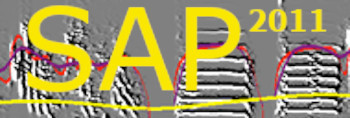Wiener entropy
| < PREVIOUS: Goodness of pitch | > NEXT: Spectral continuity |
|
|
|
|
Wiener entropy is a measure of the width and uniformity of the power spectrum. Noise is typically broadband with sound energy smeared rather smoothly within the noise range, whereas animal sounds, even when multi-harmonic, are less uniform in their frequency structure. Wiener entropy is a pure number, that is, it does not have units. On a scale of 0-1, white noise has an entropy value of 1 and complete order, and a pure tone has an entropy value of 0.
To expand the dynamic range, the Wiener entropy is measured on a logarithmic scale, ranging from 0 to minus infinity (white noise: log1=0; complete order: log0=minus infinity). The Wiener entropy of a multi-harmonic sound depends on the distribution of the power spectrum (see figure below). A narrow power spectrum (the extreme of this is a pure tone) has a large, negative Wiener entropy value; a broad power spectrum has a Wiener entropy value that approaches zero. The amplitude of the sound does not affect its Wiener entropy value, which remains virtually unchanged when the distance between the bird and microphone fluctuates during recording. Yet, the entropy time series (or curve) of a song motif is negatively correlated with its amplitude time series. This is because noisy sounds tend to have less energy than tonal sounds. A similar phenomenon has also been observed in human speech, where unvoiced phonemes have low amplitude. Wiener entropy may also correlate with the dynamic state of the syringeal sound generator, which shifts between harmonic vibrations and chaotic states. Such transitions may be among the most primitive features of song production and maybe of song imitation. Formal definition: Wiener entropy is a pure number defined as the ratio of geometric mean to arithmetic mean of the spectrum:
 |
|
